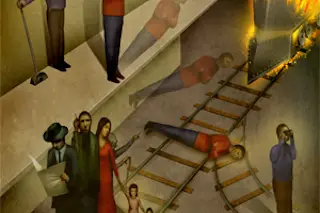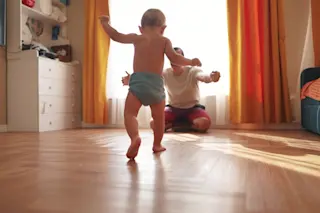You arrive at the hill early, eager to cheer the cyclists racing past. the sun is bright, the people on both sides of the road are in high spirits, and speculation about the race passes through the crowd in waves. A hot dog vendor has positioned his cart up the hill, and the aroma of simmering meat wafts by, summoning your best memories of summer. Suddenly shouts erupt. The racers are approaching. You lean forward and see a blur of colors at the summit. Then you notice something wrong. The hot dog vendor has stepped away to make change, and someone has jostled his cart off its moorings. It is rolling downhill toward the road, gathering speed, and poised to kill dozens of cyclists unless someone shoves the cart across the road—but that would kill three spectators instead. What should one do?
When researchers presented this nightmarish dilemma to volunteers ...














